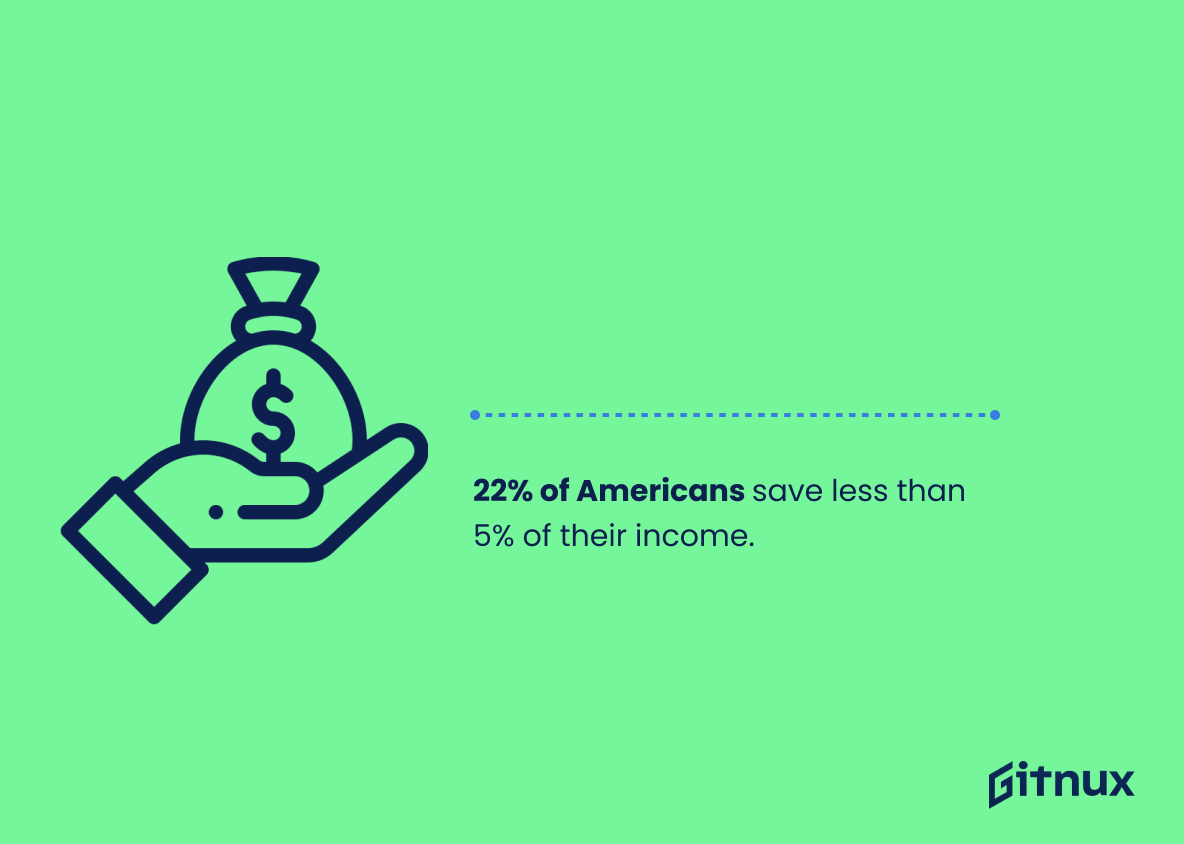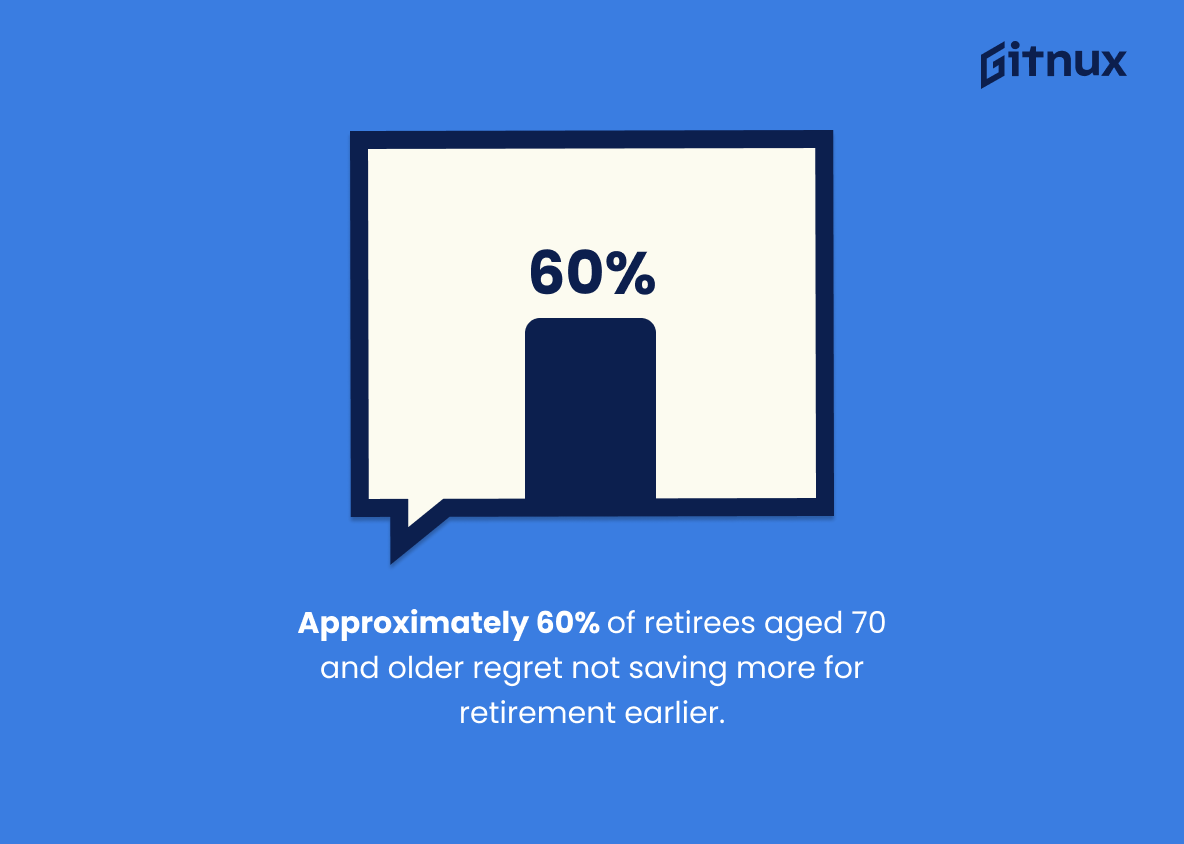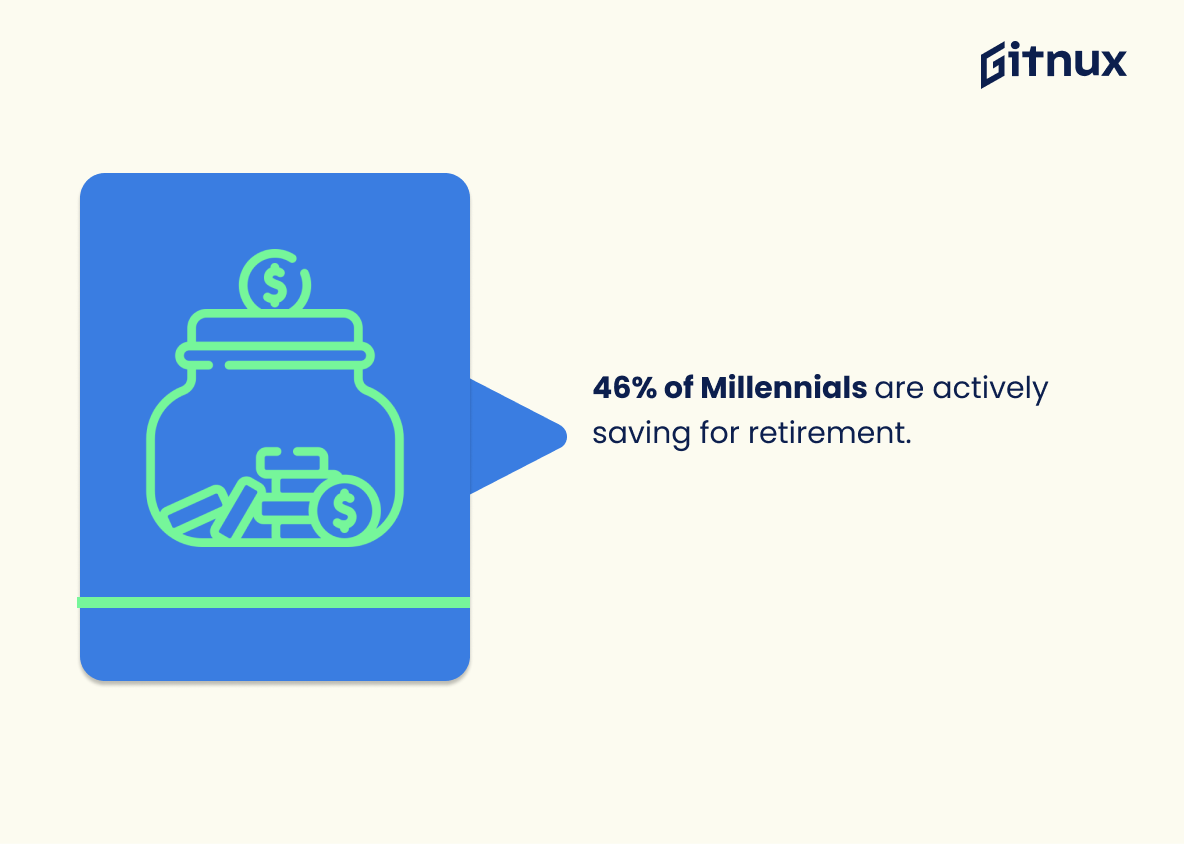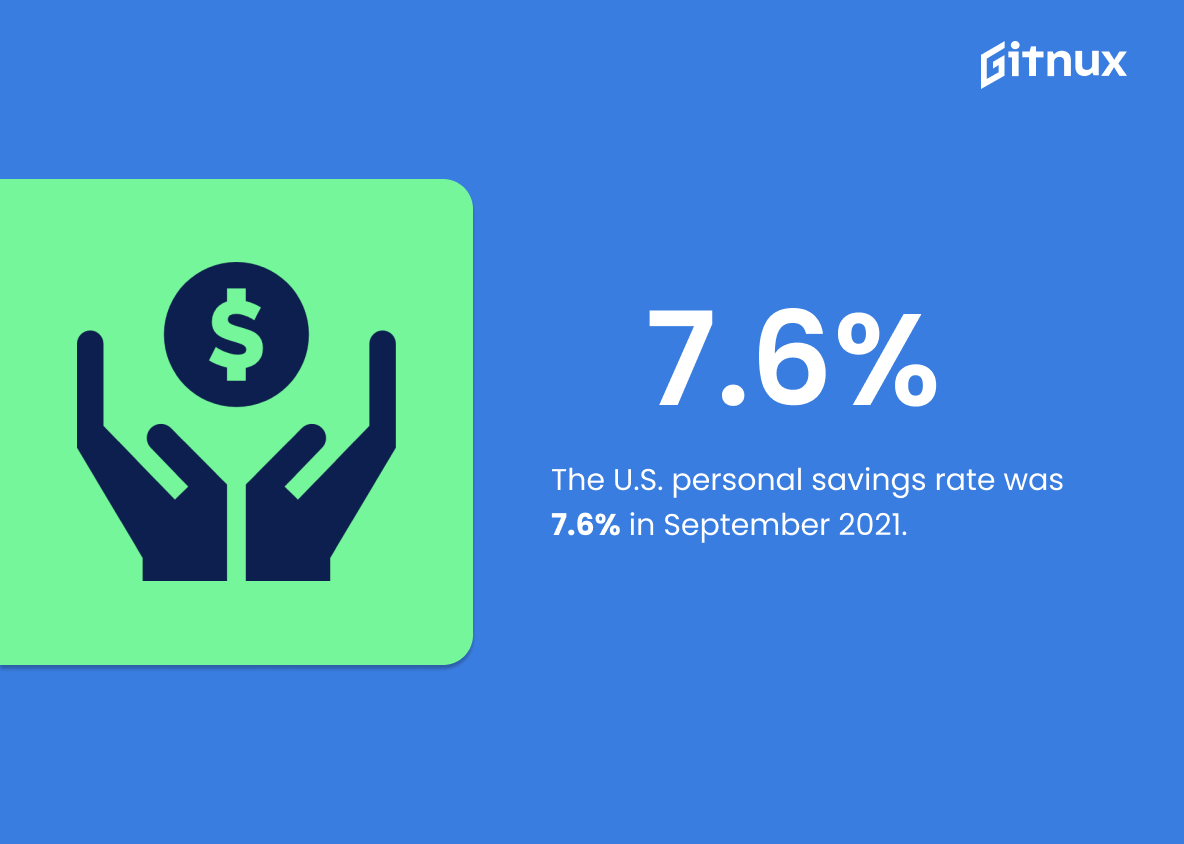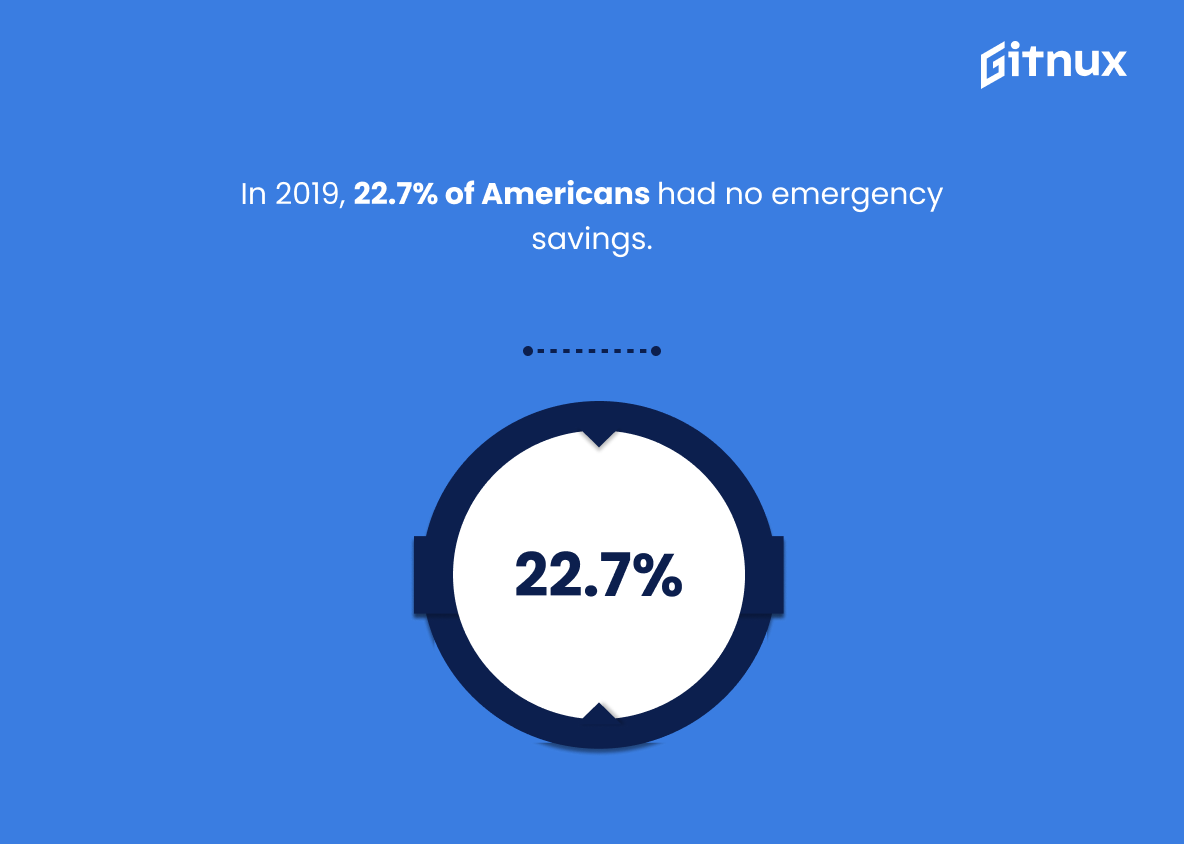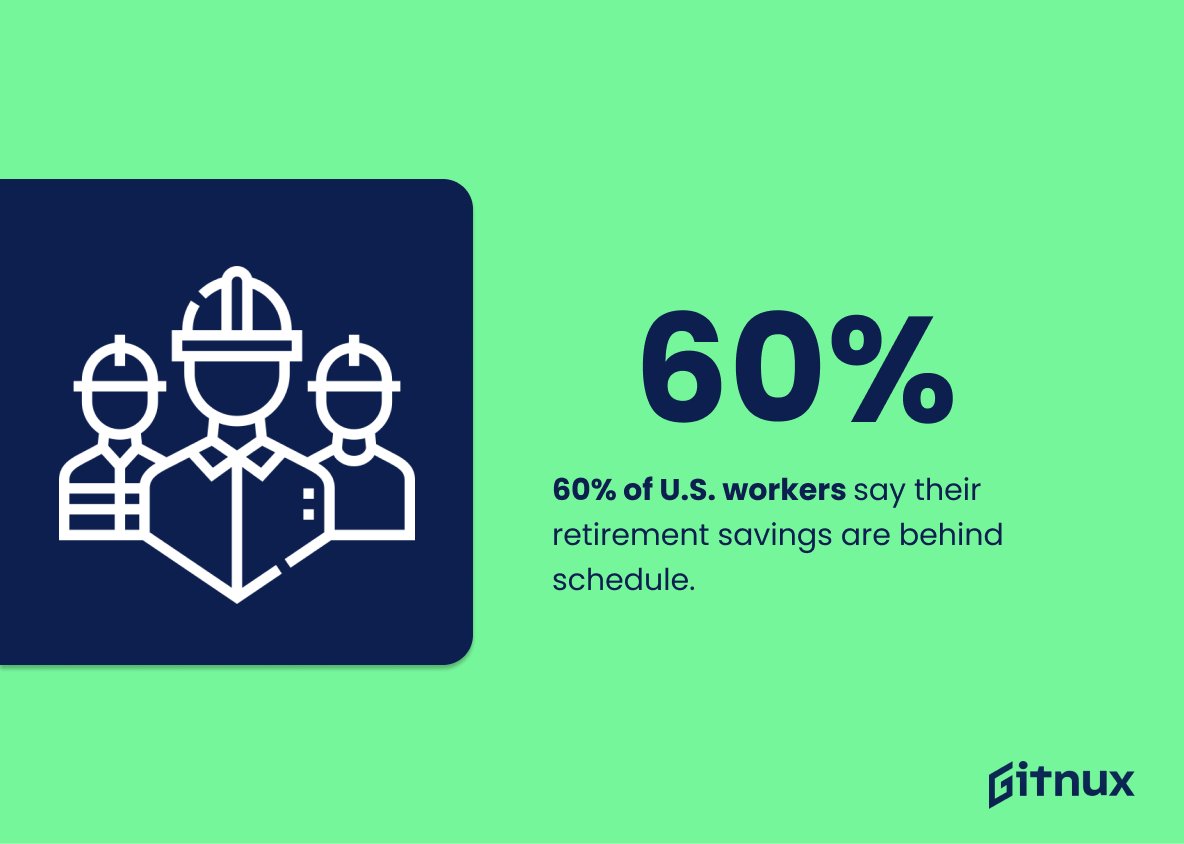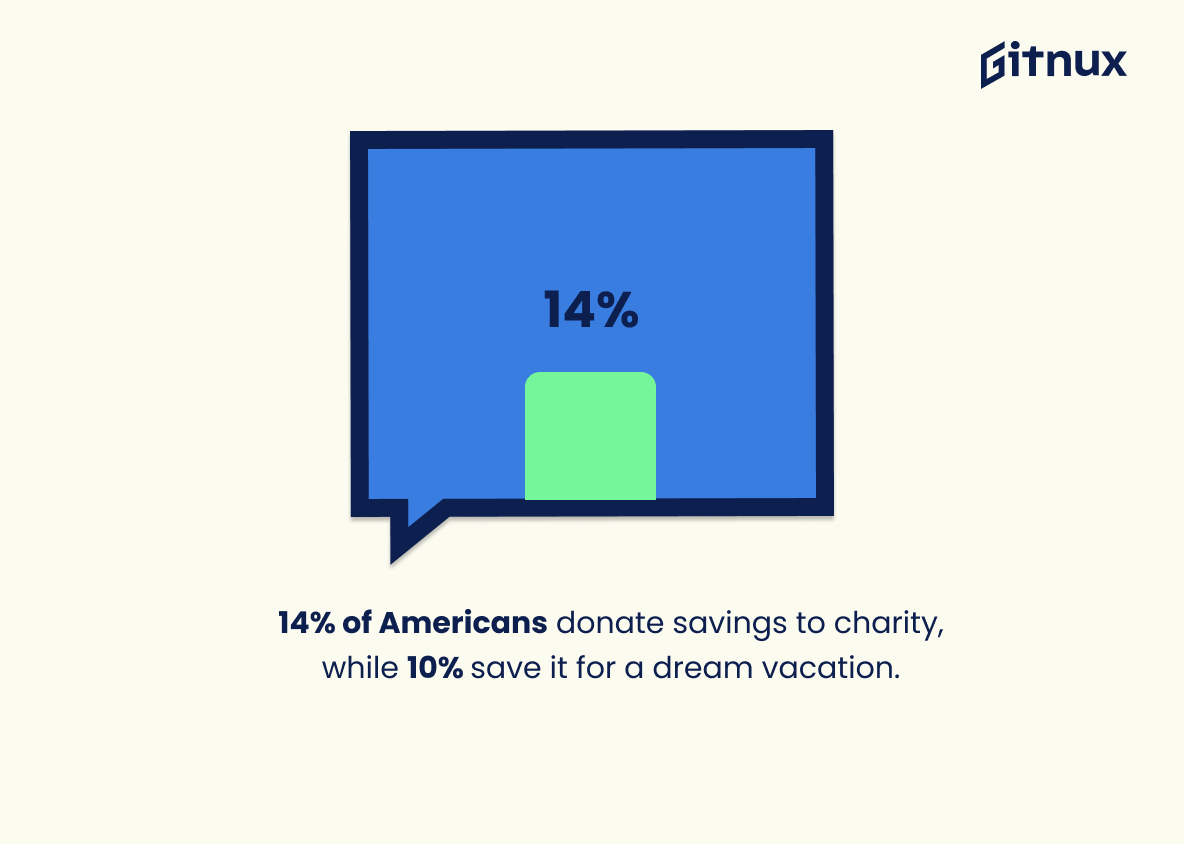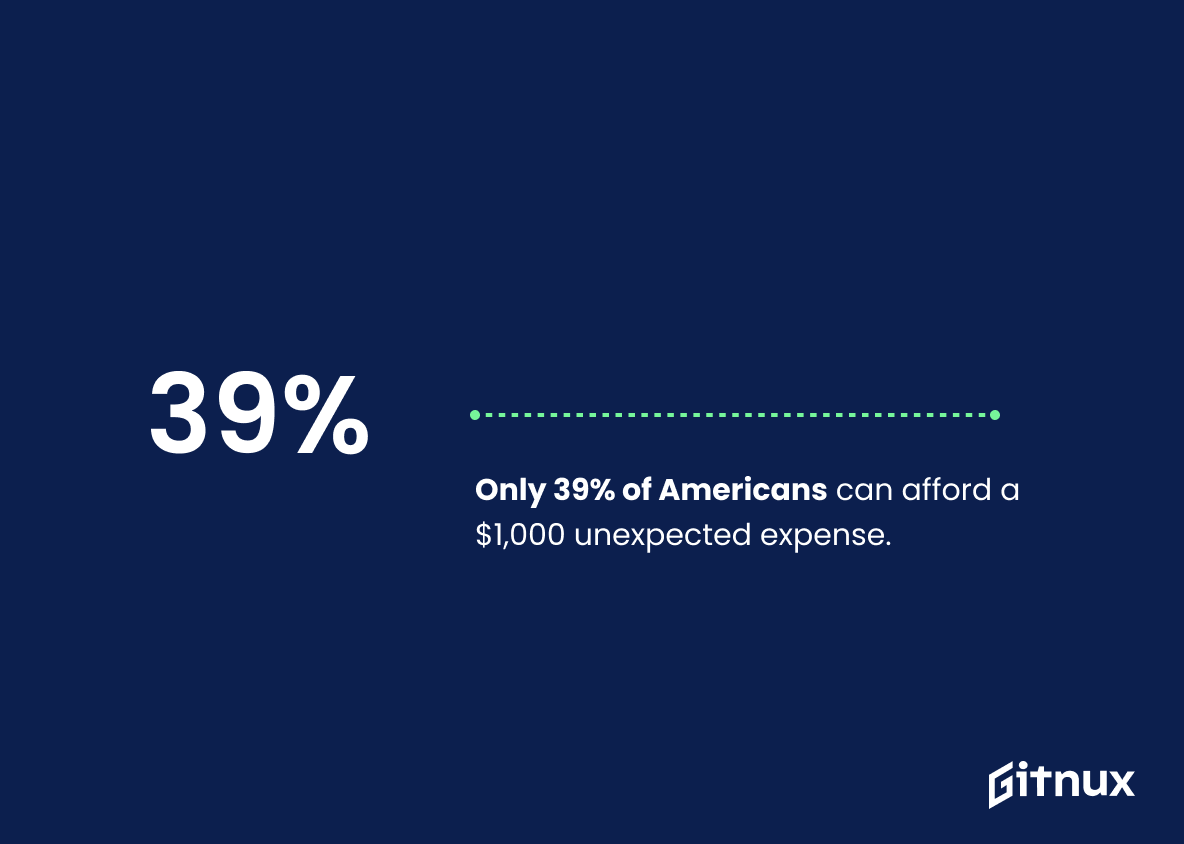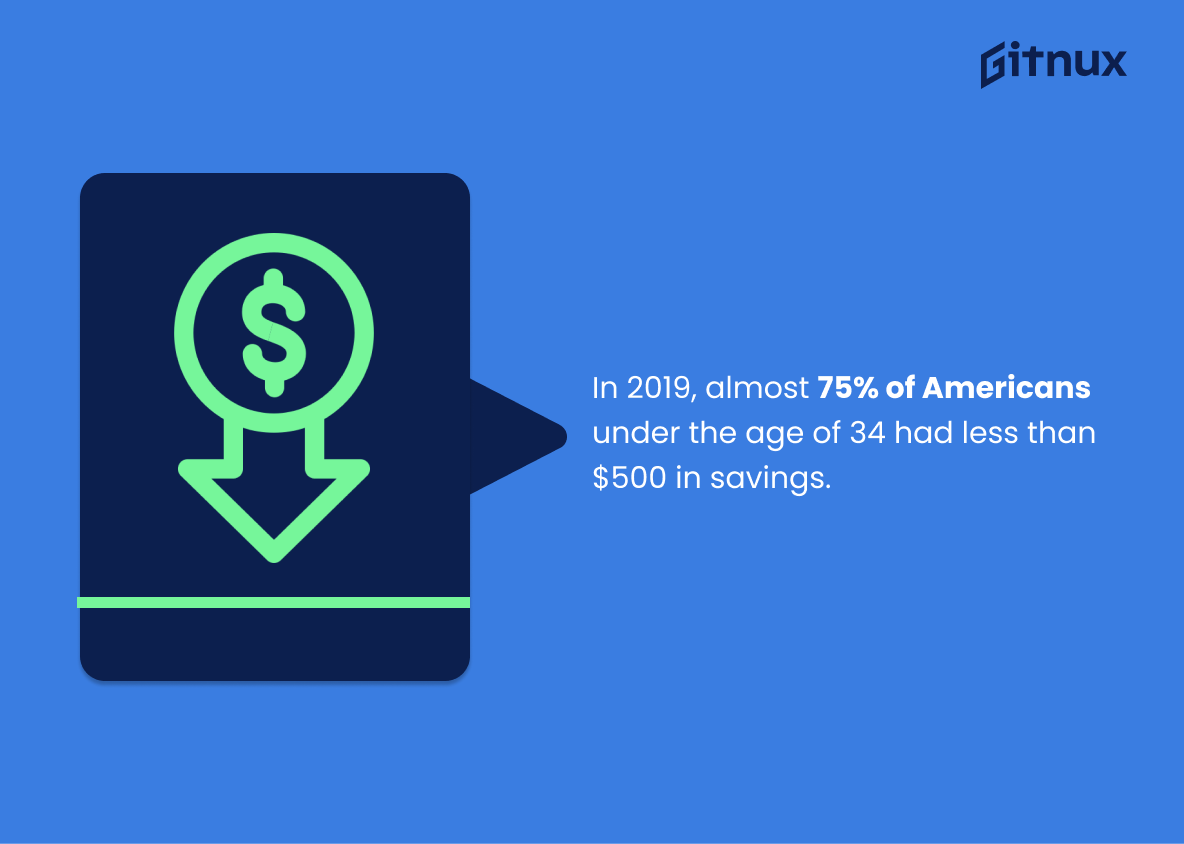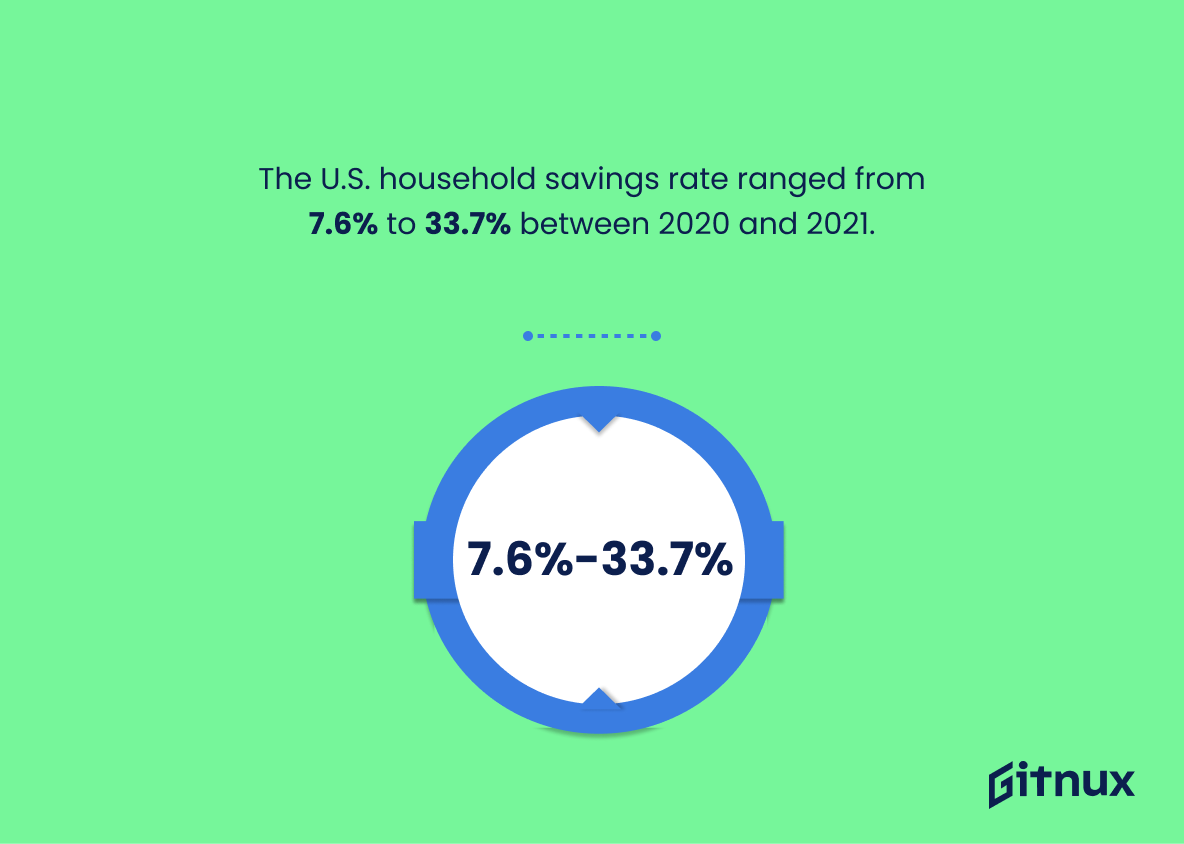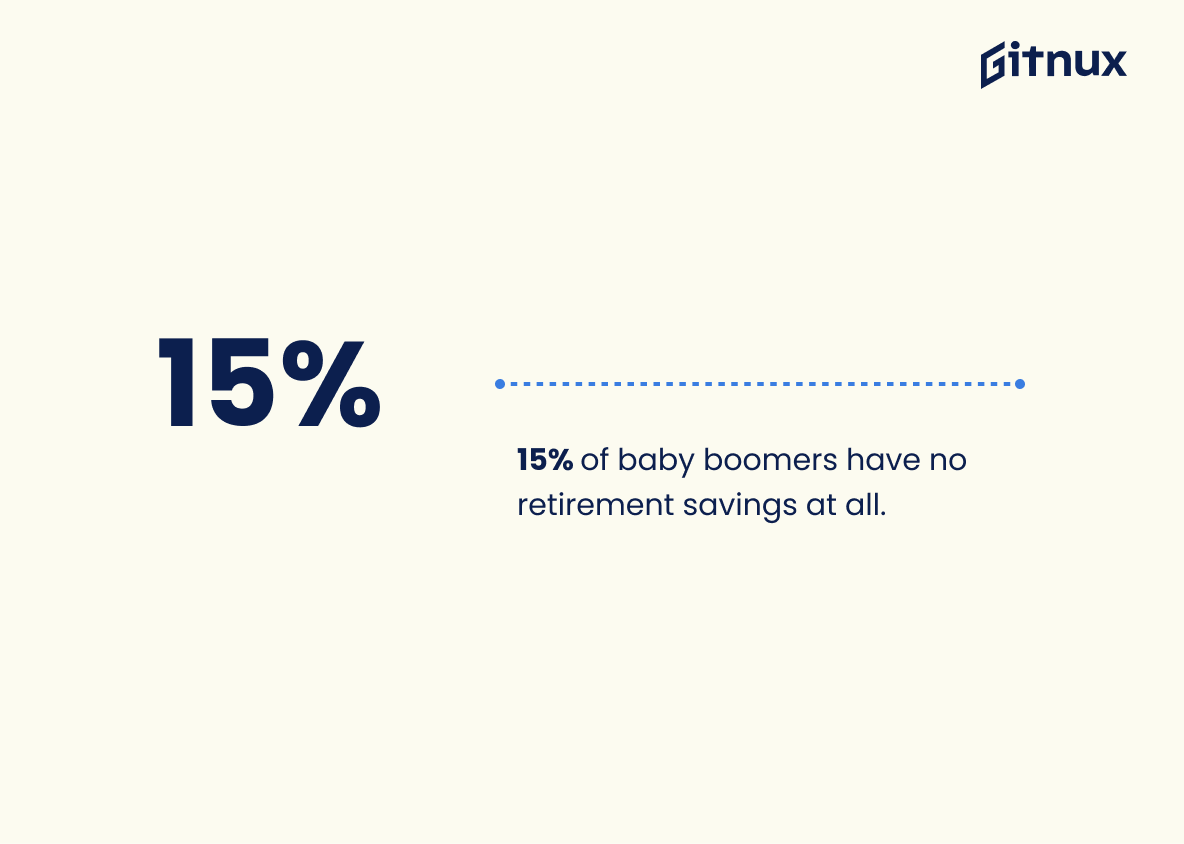Saving money is an important part of financial planning, yet many Americans struggle to do so. According to a variety of statistics from reliable sources, the majority of Americans have less than $1,000 in savings (69%), with 34% having zero savings and 22% saving less than 5% of their income. Approximately 60% of retirees aged 70 and older regret not saving more for retirement earlier while 42% self-employed individuals save more than 15%. Over 60 percent high school students in the U.S., however, do not receive formal financial education which could help them make better decisions about their finances later on in life.
Millennials are doing slightly better when it comes to retirement savings as 46%, according to Bankrate’s survey results, actively save for retirement; but 40 % would still struggle if faced with a $400 emergency expense without borrowing or selling something they own first. The personal savings rate was 7.6 %in September 2021 and 65 %of American prefer saving over spending money – 58 %have a regular account while 47 have 401(k) accounts set up already . Unfortunately 80 percent are also currently living under some form debt burden , only 19percent households had saved 10 000 dollars or more by 2019 ,and 14 percent donated what little they managed to put away towards charity instead . Finally 15 per cent baby boomers don’t even have any kind off retirements plans at all .
Saving Money Statistics Overview
22% of Americans save less than 5% of their income.
This statistic is a stark reminder of the importance of saving money. It highlights the fact that a large portion of Americans are not setting aside enough of their income for the future, which could lead to financial hardship down the road. This statistic is a call to action for people to start saving more of their income and to make sure they are setting aside enough money for their future.
Approximately 60% of retirees aged 70 and older regret not saving more for retirement earlier.
This statistic serves as a stark reminder of the importance of saving for retirement early on. It highlights the fact that, if one does not take the necessary steps to ensure a comfortable retirement, they may find themselves regretting it later in life. This statistic is a powerful reminder that saving for retirement should be a priority, and that it is never too early to start.
Over 60% of high school students in the U.S. do not receive formal financial education.
This statistic is a stark reminder of the importance of financial education. With such a large portion of high school students not receiving formal financial education, it is no wonder that many people struggle to save money and make sound financial decisions. This statistic serves as a call to action to ensure that all students have access to the financial education they need to make informed decisions about their finances.
46% of Millennials are actively saving for retirement.
This statistic is a powerful reminder of the importance of saving for retirement, particularly for Millennials. It highlights the fact that many young people are taking their financial future seriously and are actively planning for their retirement. This statistic can be used to encourage other Millennials to start saving for retirement, as well as to demonstrate the importance of financial planning for all generations.
40% of Americans would struggle to cover a $400 emergency expense without borrowing money or selling something.
This statistic serves as a stark reminder of the financial fragility of many Americans. It highlights the importance of having a savings plan in place to cover unexpected expenses, as well as the need for individuals to be mindful of their spending habits in order to ensure they are able to cover any emergency costs that may arise.
The U.S. personal savings rate was 7.6% in September 2021.
This statistic is a crucial indicator of the financial health of the nation, as it reflects the amount of money that individuals are setting aside for future use. It is an important metric for understanding how much people are investing in their future, and how much they are relying on debt to cover their current expenses. This statistic is especially relevant for a blog post about Saving Money Statistics, as it provides a snapshot of the current state of personal savings in the U.S. and can be used to inform readers about the importance of saving money.
65% of Americans prefer saving money over spending it.
This statistic is a powerful indicator of the importance of saving money in the minds of Americans. It shows that the majority of people prioritize saving money over spending it, which is a key factor in achieving financial security. This statistic is especially relevant to a blog post about Saving Money Statistics, as it provides a valuable insight into the attitudes of Americans towards saving money.
58% of Americans have a savings account, while 47% have a 401(k) account.
This statistic is a telling indication of the importance of saving money in the United States. It shows that a majority of Americans are taking the initiative to save for their future, whether it be through a savings account or a 401(k) account. This statistic is a powerful reminder that saving money is a priority for many Americans, and it serves as a great starting point for a blog post about saving money statistics.
Approximately 80% of Americans are in debt.
This statistic serves as a stark reminder of the importance of saving money. With such a large percentage of Americans in debt, it is clear that many people are not taking the necessary steps to ensure their financial security. This statistic highlights the need for individuals to be mindful of their spending habits and to prioritize saving money.
In 2019, 22.7% of Americans had no emergency savings.
This statistic serves as a stark reminder of the importance of having emergency savings. It highlights the fact that a significant portion of Americans are not adequately prepared for unexpected financial emergencies, leaving them vulnerable to financial hardship. This statistic is a call to action for individuals to prioritize saving money and build up their emergency savings.
60% of U.S. workers say their retirement savings are behind schedule.
This statistic is a stark reminder of the importance of saving for retirement. It highlights the fact that many U.S. workers are not adequately preparing for their future, and that they need to take steps to ensure they have enough money saved for retirement. It is a call to action for those who are behind schedule to start saving more and to make sure they are on track for a secure retirement.
14% of Americans donate savings to charity, while 10% save it for a dream vacation.
This statistic is a telling indication of the priorities of Americans when it comes to saving money. It shows that while a significant portion of the population is focused on setting aside funds for a dream vacation, a larger portion is more inclined to give back to their community through charitable donations. This speaks to the generosity of the American people and provides insight into how they are managing their finances.
Only 39% of Americans can afford a $1,000 unexpected expense.
This statistic serves as a stark reminder of the financial fragility of many Americans. It highlights the importance of saving money and having a financial cushion in case of an unexpected expense. It also underscores the need for individuals to be mindful of their spending habits and to plan ahead for potential financial emergencies.
In 2019, almost 75% of Americans under the age of 34 had less than $500 in savings.
This statistic is a stark reminder of the financial struggles that many young Americans face. It highlights the need for individuals to prioritize saving money, as well as the importance of financial education and planning. It also serves as a warning that without proper planning, many young people may find themselves in a precarious financial situation.
The U.S. household savings rate ranged from 7.6% to 33.7% between 2020 and 2021.
This statistic is a powerful indicator of the importance of saving money in the current economic climate. It shows that, despite the challenges of the past year, many households have been able to increase their savings rate significantly. This is a testament to the importance of budgeting and planning for the future, and serves as an inspiration to those who are looking to make the most of their money.
15% of baby boomers have no retirement savings at all.
This statistic is a stark reminder of the importance of saving for retirement. It highlights the need for individuals to plan ahead and make sure they are setting aside money for their future. It also serves as a warning to those who may be relying on Social Security or other sources of income in retirement, as these may not be enough to sustain them. The statistic is a powerful reminder that saving for retirement is essential for financial security in later life.
Conclusion
The statistics presented in this blog post demonstrate the importance of saving money. Despite a range of savings rates between 7.6% and 33.7%, many Americans are still struggling to save enough for retirement, with only 39% able to afford an unexpected expense of $1,000 or more and 15% having no retirement savings at all. Additionally, over 60% of high school students do not receive formal financial education which could help them make better decisions about their finances later on in life. It is clear that there is much work to be done when it comes to educating people about the importance of saving money and helping them build up their nest eggs for future security and peace-of-mind.
References
0. – https://www.news.gallup.com
1. – https://www.fool.com
2. – https://www.federalreserve.gov
3. – https://www.statista.com
4. – https://www.bankrate.com
5. – https://www.investmentnews.com
6. – https://www.nerdwallet.com
7. – https://www.gobankingrates.com
8. – https://www.lendingtree.com
9. – https://www.moneymanagement.org
10. – https://www.transamericacenter.org
11. – https://www.fred.stlouisfed.org
12. – https://www.fortune.com
13. – https://www.cnbc.com
14. – https://www.thelawdictionary.org


